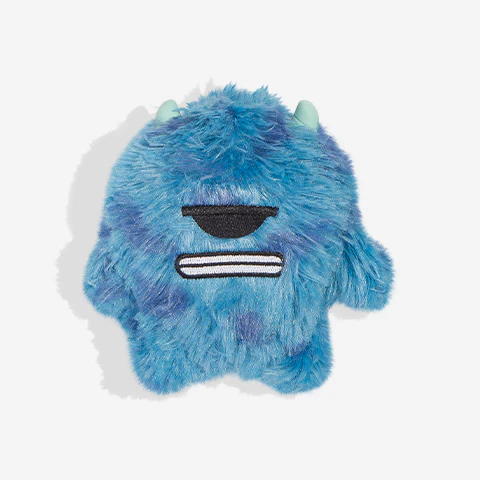Rainy days can put a damper on outdoor activities, but they don’t have to ruin the fun for a dog. Engaging a dog indoors requires creativity and a range of activities that stimulate both their mind and body. From interactive toys to training sessions, there are plenty of ways to keep a furry friend entertained when the weather keeps them inside.
A simple game of hide and seek can provide mental stimulation while letting them burn off some energy. Dog puzzles and treat-dispensing toys challenge them to think and work for their rewards. Incorporating some basic obedience training can also keep their minds engaged and reinforce good behavior.
Additionally, creating an indoor obstacle course can be a delightful way to keep them physically active. Using furniture and safe household items, a pet owner can set up an engaging space that encourages their dog to jump, crawl, and weave. These activities not only help pass the time but also strengthen the bond between pet and owner.
Understanding Your Dog's Needs
Attention to a dog's unique needs is essential, especially during indoor days. Two key areas to focus on are mental stimulation and physical exercise.
Mental Stimulation
Dogs require mental challenges just as much as they need physical activity. Engaging their minds can prevent boredom and minimize destructive behavior. Consider introducing puzzle toys that dispense treats when solved. These toys encourage dogs to think and problem-solve.
Training sessions also offer great mental stimulation. Short, frequent training exercises build skills and strengthen the bond between a dog and its owner. Commands such as "sit," "stay," or even trick training can be both fun and rewarding.
Incorporating scent work can provide an excellent challenge. Hiding treats around the house for your dog to find stimulates their natural instincts and keeps them engaged.
Physical Exercise
Even indoors, dogs still need physical activity to maintain their health and well-being. Simple games like fetch can be played in a hallway or living room. Using a soft ball or toy minimizes damage while still allowing for energetic play.
Tug-of-war is another effective option. It promotes bonding and provides great exercise. Ensuring the game remains safe and gentle is vital to prevent injury.
Obstacle courses made from everyday household items can also create a stimulating environment. Using cushions, chairs, or boxes encourages dogs to navigate and explore, meeting their need for physical engagement.
Indoor Activities for Your Dog
When rainy days keep dogs indoors, providing engaging activities becomes crucial. This section covers effective ways to keep dogs entertained with interactive games, structured training, and stimulating puzzle toys.
Interactive Games
Interactive games are excellent for bonding and keeping dogs mentally stimulated. Games like hide-and-seek can be enjoyable. To play, one person hides while the dog stays in a designated spot, then calls the dog to seek them out.
Fetch can also be adapted for indoors. Use soft toys to minimize damage and toss them down hallways or open living spaces. Tug-of-war is another fun option that helps burn energy. Choose a sturdy rope toy and let the dog pull while maintaining control.
Training Sessions
Turning training into a game can make indoor time productive. Short, focused sessions work best, lasting around 5-10 minutes to maintain the dog's interest. Teaching basic commands like sit, stay, and roll over reinforces obedience and provides mental stimulation.
Incorporating tricks like "spin" or "play dead" can also be enjoyable. Use treats as positive reinforcement to encourage the dog. Consistently introducing new commands helps to keep sessions engaging and promotes continuous learning.
Puzzle Toys
Puzzle toys effectively challenge a dog’s problem-solving skills. These toys typically involve hiding treats within compartments that dogs must manipulate to access. Choose toys that match the dog's skill level to ensure they remain interested.
Rotating different puzzle toys helps maintain engagement. Many brands offer various difficulty levels, allowing owners to adjust as the dog becomes more adept. Tracking the dog's learning progress can enhance the experience and promote cognitive development.
Creating an Engaging Environment
A stimulating environment can help keep a dog entertained indoors, especially during rainy days. Focusing on creating safe spaces and designated viewing areas can encourage exploration and reduce boredom.
Safe Spaces
Creating safe spaces for a dog involves setting up areas where they can relax and feel secure. Use cozy blankets, pet beds, or designated corners with their favorite toys.
Tips for safe spaces:
- Choose quiet areas away from noise.
- Include familiar scents like their bedding.
- Add interactive toys to keep them engaged.
Consider using baby gates to define these spaces and make them feel more enclosed. This structured environment can help a dog feel at ease. By allowing personal areas, they can retreat when feeling overwhelmed.
Viewing Areas
Designating viewing areas can satisfy a dog's curiosity and need for mental stimulation. Positioning a comfortable spot by windows creates an opportunity for them to observe the outside world.
Setting up viewing areas:
- Use a pet-safe window seat or a soft blanket.
- Ensure the area is clear of hazards like cords or breakables.
- Rotate toys near the window to keep interest piqued.
A well-placed perch can keep a dog entertained as they watch birds or passersby. Engaging with the environment through sight can significantly enrich their indoor experience.








